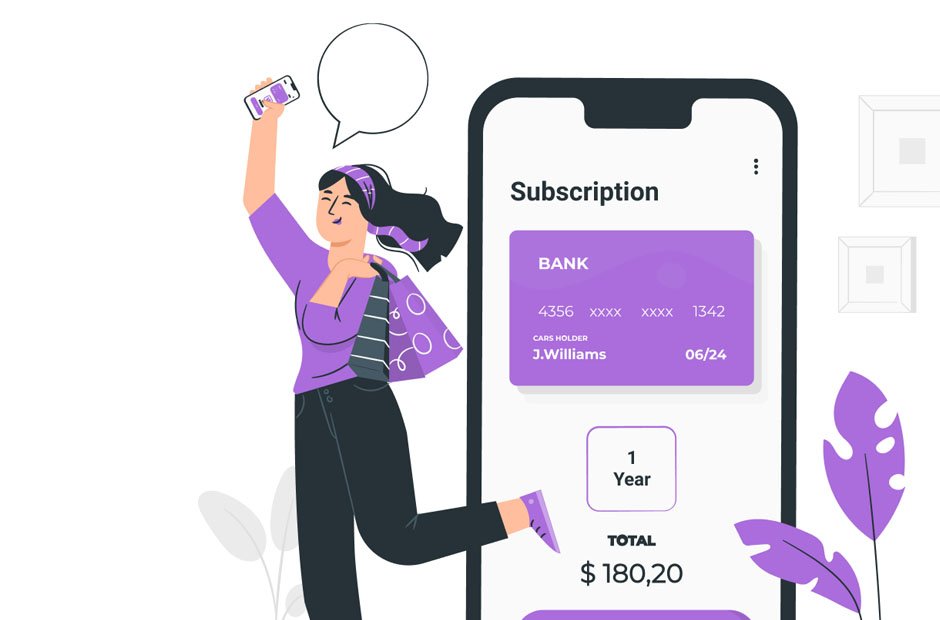Welcome to the era of subscription-based applications. As the digital landscape evolves, subscription models are a beacon of adaptability and financial resilience. In this comprehensive guide, we’ll delve into the intricacies of these models, exploring the latest trends and the undeniable benefits they bring to the table.
Emerging Trends in Subscription Models
In today’s digital age, the success of mobile apps often hinges on the chosen monetization strategy. Below, we will review the essentials of subscription models so that you use those to your benefit. To navigate this landscape effectively, it’s best to turn to a reputable custom mobile apps development service that will help to ensure that the app’s subscription model aligns with user expectations and market demands.
Freemium to Premium Transitions
The freemium model has become a cornerstone for many apps, especially productivity tools and multimedia platforms. By offering core functionalities for free, apps can attract a broad user base, allowing them to experience the basic features. This strategy serves a dual purpose: it builds trust and showcases the value proposition. Once users recognize the app’s potential, they are more inclined to explore the premium features through a subscription.
Consider Spotify, a music streaming giant. Their freemium model allows users to enjoy music with ads. However, users can opt for premium access for an ad-free experience, offline downloads, and more. This model ensures that while everyone enjoys music, dedicated users get an enhanced experience for a fee.
Tiered Subscriptions
The tiered model is all about choice and scalability. Apps segment their offerings into multiple tiers, each with its distinct set of features and pricing. This stratification caters to diverse users, from casual to power users.
Dropbox, for example, offers tiered subscriptions. Users can start with a basic free storage limit and upgrade to plans offering more space and features. It ensures that both casual users and businesses find value in their offerings.
Short-Term Trials
Commitment can be daunting, especially when it comes to digital services. Recognizing this, many apps now offer short-term trials, typically from a week to a month. These trials grant users full access to premium features, allowing them to gauge the app’s value without any financial commitment. Such trials act as a bridge: they reduce the gap between free users and potential subscribers. By experiencing the full spectrum of features, users can make informed decisions about continuing with a paid subscription.
For instance, Adobe Creative Cloud offers a 7-day free trial for its suite of design and multimedia tools. Users can explore advanced editing features, cloud storage, and collaborative tools during this period without any restrictions. Similarly, Evernote, a popular note-taking and organization app, provides a free trial of its Premium version. It allows users to experience enhanced note-taking capabilities, integrations, and advanced search features.
Why Shift to Subscription Models?
Now, let’s delve deeper into the reasons behind this paradigm shift and its implications for the app ecosystem.
Predictable Revenue Streams
The allure of predictable revenue cannot be understated. Unlike the unpredictability of one-time purchases, subscription models offer businesses a consistent and recurring revenue stream. This regularity not only aids in better financial forecasting but also provides a stable foundation for sustained business growth.
Continuous User Engagement
The subscription model inherently demands continuous value delivery. For developers, this means regular updates, feature enhancements, and consistent user support. Such ongoing efforts lead to heightened user engagement. It ensures subscribers remain invested in the app, increasing app stickiness, and reducing churn rates.
Flexibility for Users
From a user’s perspective, subscriptions offer unparalleled flexibility. Whether it’s a monthly or yearly plan, they can opt in or out based on current needs and financial considerations. Thanks to this adaptability, users always perceive tangible value in their expenditure, fostering a sense of trust and loyalty towards the app.
Best Practices for Implementing Subscription Models
Adopting a subscription model in the app world is not merely about setting up a payment system but crafting a user-centric experience that fosters trust and loyalty. To ensure the success of your subscription strategy, consider the following best practices:
- Transparent Pricing
It’s imperative to maintain transparency in your pricing structure. Users should never feel deceived by hidden charges or ambiguous terms. Clearly outline the costs, the frequency of payments, and the benefits associated with each subscription tier. A transparent approach builds trust and reduces the likelihood of subscription cancellations.
- Easy Onboarding
First impressions matter. An intuitive and seamless onboarding process can create a positive user experience. Highlight the core benefits of subscribing and ensure that users can navigate the process effortlessly.
- Regular Updates & Enhancements
Subscription models demand continuous value delivery. Regularly roll out updates, fix bugs, and introduce new features. Such commitment showcases your dedication to user satisfaction and can significantly reduce churn rates.
- Feedback Loops
Engage g with your user base. Implement mechanisms to gather feedback through in-app surveys, feedback forms, or community forums. Such insights can guide your development roadmap, ensuring you cater to actual user needs and preferences.
Actionable Tips for App Developers
Adopting a subscription model can be a game-changer in the dynamic landscape of app development. However, its success hinges on user understanding and strategic implementation. Here are some actionable tips for app developers venturing into this domain:
- Market Research: Before implementing a subscription model, understand your target audience. What are they willing to pay for? What features do they value most?
- Clear Communication: Always notify users of any subscription pricing or terms changes. Clear communication fosters trust and reduces churn.
- Offer Multiple Payment Options: From credit cards to digital wallets, ensure users can choose their preferred payment method.
- Analyze & Iterate: Use analytics tools to understand subscription trends. Which features drive the most subscriptions? Are there any common reasons for churn? Use these insights to refine your strategy.
Conclusion
The app subscription model is not just a monetization strategy. It’s a commitment to continuous value delivery. For those venturing into the world of app subscriptions, remember to stay updated with industry trends, listen to your user base, and be ready to adapt. In app development, flexibility and user-centricity are the keys to success.
















